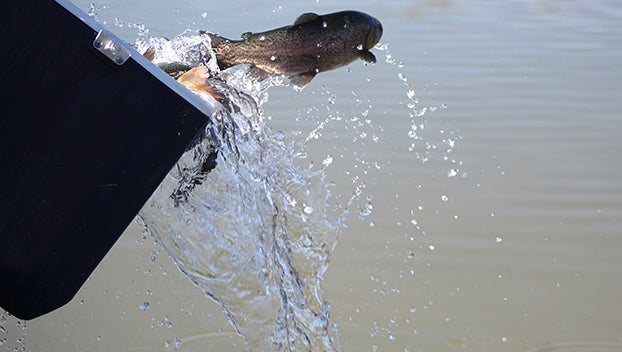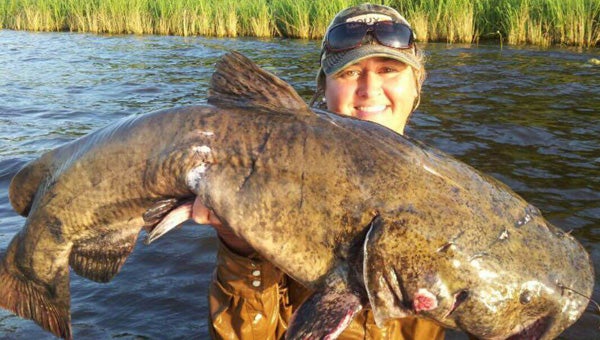Biologists tracking alligator gar at St. Catherine Creek refuge
Published 12:01 am Sunday, September 22, 2013

History biologist Kayla Kimmel and Alonda Wright hold and release a large alligator gar after implanting a transmitter into it to track its movements. Wright and Kimmel will be part of the study to learn more about alligator movement in the Mississippi River Valley. (Submitted photo)
SIBLEY — Alligator gar have become more rare the further north they migrate. They are on the verge of becoming extinct in America, and the U.S. Wildlife and Fisheries is out to save the species.
But for some reason, there are plenty of Gar swimming around in St. Catherine Creek Refuge, and Refuge biologist Nick Wirwa has teamed up with history biologist Kayla Kimmel to find out why.
Kimmel comes from the Baton Rouge Wildlife and Fisheries office twice a year to research the refuge and why Gar like it there so much.
“We’re trying to determine where the Alligator Gar has gone so we can preserve the habitats for them here and else where,” Kimmel said.
One thing they do know, Kimmel said, is the flooding from the Mississippi River plays a major part in their research.
“We know they do well here because of the flood plains,” she said. “They have to use the flood plains to spawn, and Natchez has one of the only natural flood plains on the river.”
Spawning is another big part of preserving Alligator Gar, and finding out where they like to spawn will give Kimmel a look into how to keep reproducing Gar not only in Mississippi, but as far north as Illinois.
“We want to know where they’re having their babies,” Kimmel said. “In this area, it varies so much, and we want to know so we can apply it to other areas here and up and down the Mississippi River.”
The research started back in February of 2010 and Kimmel has implanted 60 Gar with a transmitter with its own ID number to collect data about their traveling and spawning patterns during the flood season.
There are also more than 25 receivers placed around the refuge to take in the data from the transmitters.
“The transmitter pings wherever it goes, and the receiver are listening for the pings,” Wirwa said. “We put it on trees or floats in the water and receive the data, time and ID number of the fish that swim by.”
Kimmel said the process took some time, but it is very beneficial when the area floods and things get out of control.

An up-close look at the transmitter that will be surgically implanted in alligator gar to track their movements in St. Catherine Creek Refuge. (Submitted photo)
“We put up some big nets and catch the gar, then we surgically put transmitters in them and track where they go,” Kimmel said. “When the water floods, there’s a lot of area they can get to, and we map out where they go to spawn.”
Kimmel will be coming back to the Refuge on Oct. 1. to see where the fish have gone now that the flood season is over.
“We want to know, do they just go back to the Mississippi River, or do they stay here (at the refuge)?” she said.
Kimmel said the reason for tracking the Gar among several types of fish in the Refuge is because of their seniority.
“They’re the native species, they’ve been around for 150 million years,” Kimmel said. “They serve as a biological control for fish that grow out of control. Without Gar, things can get out of balance quickly.”
Wirwa said another question they want to answer with their research is what kind of vegetation does the refuge need to be producing in order to promote the Gars’ spawning.
“Is there anything we need to continue doing like farming to help?” Wirwa said. “Or is there anything we need to stop doing in order to make things easier for the Gar. Those are things we can control.”
As Kimmel looks for ways to enhance Gar reproduction, the U.S. Wildlife and Fisheries will do their part to help save a dying species.
“The fisheries comes and collects Gar and spawns them and restock them in areas that have been depleted like Tennessee, Arkansas and Illinois,” Kimmel said.
Kimmel and Wirwa will continue to work extensively to try to save a species before it’s too late.






